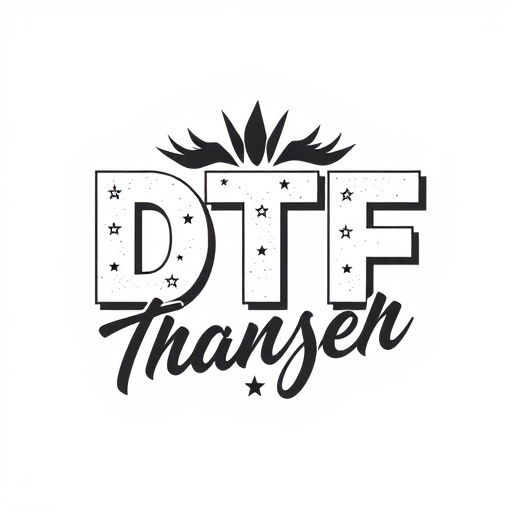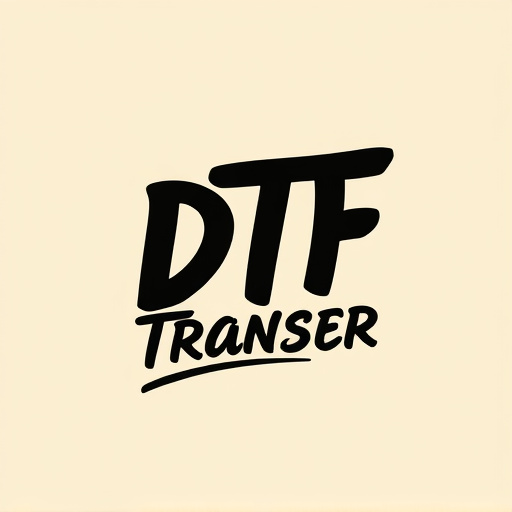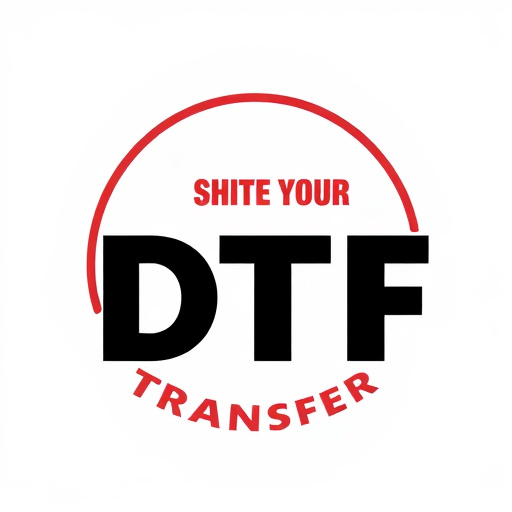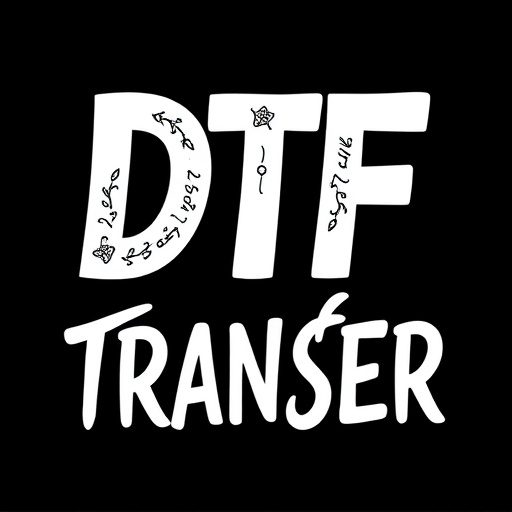Direct-to-film (DTF) technology is transforming fabric printing by directly applying ink to fabrics, streamlining production and offering precise, high-resolution prints on various clothing items. This method produces vibrant, durable results that become part of the fabric, making it popular among artisans and fashion brands for swiftly creating custom designs at competitive costs. DTF transfer is versatile, suitable for garments like T-shirts, hoodies, caps, and socks, allowing for intricate patterns, bold graphics, and full-color images. The process involves graphic designers creating digital artwork optimized for DTF printing, followed by precise heat-sensitive ink application and quality control checks to ensure visually captivating and durable designs.
Direct-to-film (DTF) technology is revolutionizing custom clothing design. This innovative process allows for precise and vibrant prints directly on fabric, eliminating the need for intermediate steps. In this article, we delve into the world of DTF transfer, exploring its benefits, suitable clothing items, and the creative possibilities it offers. Learn about the process from design to final prints, best practices for high-quality transfers, and how DTF is transforming the fashion industry with its versatility and efficiency.
- Understanding Direct-to-Film (DTF) Technology: A Brief Overview
- Benefits of DTF Transfer for Custom Clothing Design
- Suitable Clothing Items for DTF Printing: A Comprehensive List
- The Process: From Design to Final DTF Prints
- Best Practices for Achieving High-Quality DTF Transfers
- Exploring Creative Possibilities with DTF Designs
Understanding Direct-to-Film (DTF) Technology: A Brief Overview
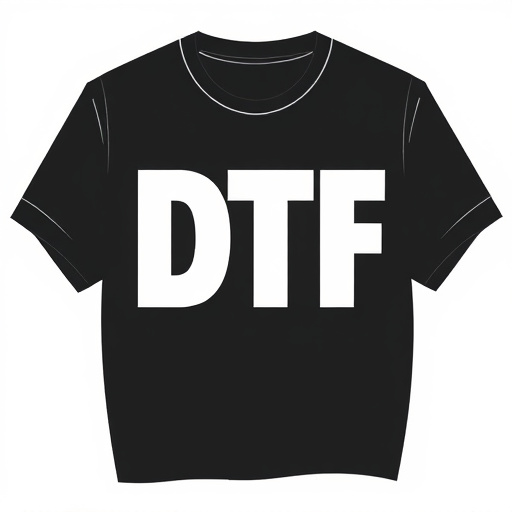
Direct-to-film (DTF) technology is a cutting-edge approach to printing designs directly onto fabrics using specialized equipment and ink. Unlike traditional printing methods, DTF eliminates the need for separate steps like screen preparation or plate making, streamlining the production process significantly. This innovative technique allows for precise, high-resolution prints on a variety of clothing items, from t-shirts to hoodies.
DTF transfers involve applying a thin layer of ink directly onto the fabric’s surface, which is then cured using heat or UV light. The result is a vibrant, durable print that becomes an integral part of the fabric, offering exceptional quality and longevity. DTF printing has gained immense popularity for its ability to create custom designs swiftly and cost-effectively, catering to both small-scale artisans and large-scale fashion brands alike. Its versatility allows for intricate patterns, bold graphics, and even full-color images, making it a game-changer in the apparel industry.
Benefits of DTF Transfer for Custom Clothing Design

Direct-to-film (DTF) transfer is a game-changer for custom clothing design. This innovative printing technique allows designers and artisans to create intricate and vibrant prints directly onto various fabric surfaces, offering unparalleled versatility and creativity. Unlike traditional printing methods that often involve multiple layers and complex processes, DTF provides a straightforward and efficient way to apply detailed designs.
One of the significant advantages of DTF Transfer is its ability to produce high-quality, durable prints on a wide range of clothing items. Whether it’s a T-shirt, hoodie, or even delicate silk scarves, DTF Printing ensures that designs remain vibrant and consistent. This method also facilitates quick turnaround times, making it ideal for small-batch production or even custom orders. Moreover, DTF Prints offer cost-effectiveness without compromising on quality, making it an attractive option for both fashion designers and individuals seeking unique, personalized clothing pieces.
Suitable Clothing Items for DTF Printing: A Comprehensive List

Direct-to-film (DTF) printing offers a versatile and dynamic way to design various clothing items, allowing for unique and personalized pieces. When it comes to choosing the right garments for DTF transfers, the options are extensive and depend on factors like fabric type, fit, and the desired design complexity.
Suitable clothing items for DTF printing include t-shirts (both crew neck and V-neck), hoodies, sweatshirts, tank tops, baseball caps, and even socks. These garments provide a good balance between surface area for printing and comfort for the wearer. T-shirts, in particular, are a popular choice due to their versatility and ability to accommodate intricate designs. Hoodies offer an excellent canvas for larger, full-coverage prints, while caps are ideal for smaller, detailed DTF transfers. Socks, with their higher stretchability, can also showcase complex patterns and are perfect for limited-edition collaborations or novelty items.
The Process: From Design to Final DTF Prints

The journey from design to final DTF (Direct-to-Film) prints involves a meticulous process that combines artistic vision and technical precision. It begins with the creation of digital artwork, where graphic designers craft visually appealing and high-resolution images tailored for specific clothing items. These designs are then optimized for DTF transfer, ensuring they meet the required specifications for printing on various fabrics.
Once the design is finalized, it’s prepared for printing using specialized software. The DTF transfer process involves applying a thin layer of heat-sensitive ink to the design and transferring it onto the desired clothing item via a high-pressure heating press. This method allows for precise application, ensuring crisp and vibrant colors on the fabric. After the transfer, the printed garments undergo quality control checks to guarantee that the DTF prints meet the expected standards, resulting in visually stunning and durable designs.
Best Practices for Achieving High-Quality DTF Transfers
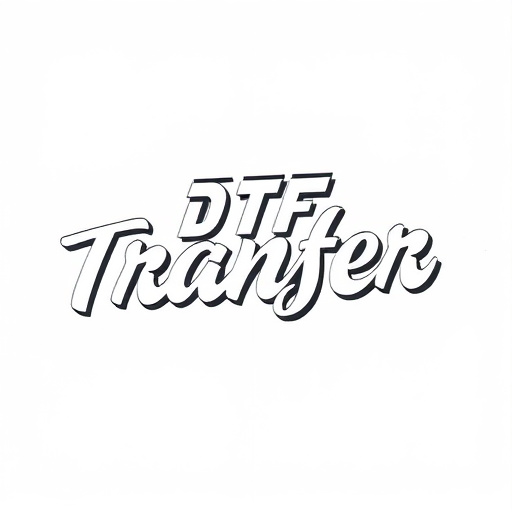
Achieving high-quality Direct-to-Film (DTF) transfers requires a meticulous approach and adherence to best practices. Firstly, ensure your design files are optimized for DTF printing with the correct resolution and color profiles. Vector graphics are ideal as they offer crisp lines and precise detail, resulting in more accurate prints.
During the print process, maintaining optimal temperature and pressure settings is crucial. Each fabric type requires specific settings, so testing on a small scale before full production is recommended. Additionally, using high-quality DTF inks compatible with your printer guarantees vibrant and long-lasting DTF prints. Regularly calibrating your printer ensures consistent outcomes, ensuring each DTF transfer meets the desired standards.
Exploring Creative Possibilities with DTF Designs
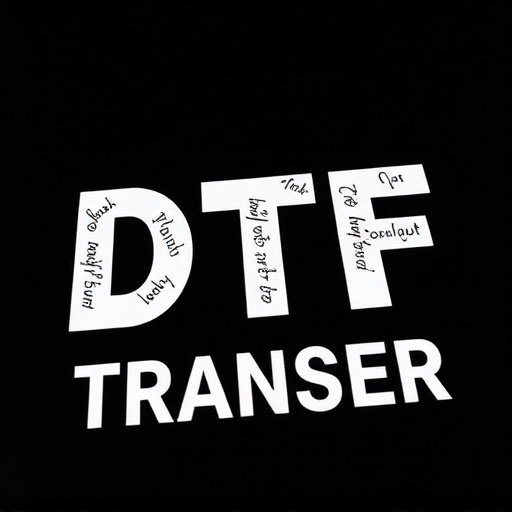
Direct-to-film (DTF) designs offer a realm of creative possibilities for clothing manufacturers and designers. By eliminating the need for traditional printing methods, DTF transfers allow for intricate and vibrant prints to be directly applied to various fabric surfaces. This innovative process enables the creation of unique, personalized, and visually appealing clothing items that cater to diverse consumer preferences.
With DTF printing, designers can explore a wide array of creative options. From bold graphics and eye-catching illustrations to subtle, artistic textures, the versatility of this technology is unparalleled. Whether it’s for t-shirts, hoodies, or even specialized activewear, DTF prints ensure that each garment becomes a canvas for self-expression. The ability to quickly adapt designs and offer limited-edition pieces makes DTF an attractive choice for brands aiming to stand out in the competitive fashion market.










